In Friday’s Wall Street Journal drama column (which is already available on line) I review a pair of Chicago-area productions of classical French comedies, Writers’ Theatre’s The Liar and the Court Theatre’s Tartuffe. Both are must-see shows. Here’s an excerpt.
* * *
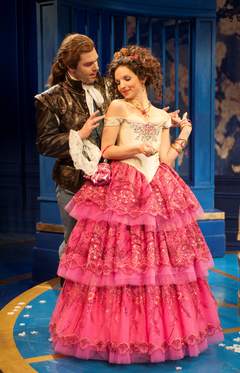 What’s the funniest play ever written? I used to think it was “Noises Off,” but now that I’ve seen “The Liar,” I’m not so sure. David Ives’ English-language adaptation of Pierre Corneille’s 1643 comedy about a compulsive liar, was commissioned by Washington’s Shakespeare Theatre Company and premiered there three years ago to universal acclaim. Since then it’s been making the regional rounds, and I finally caught up with it in the suburbs of Chicago, where Writers’ Theatre is giving “The Liar” a frenziedly farcical production at which I laughed so hard that I was sore the next day.
What’s the funniest play ever written? I used to think it was “Noises Off,” but now that I’ve seen “The Liar,” I’m not so sure. David Ives’ English-language adaptation of Pierre Corneille’s 1643 comedy about a compulsive liar, was commissioned by Washington’s Shakespeare Theatre Company and premiered there three years ago to universal acclaim. Since then it’s been making the regional rounds, and I finally caught up with it in the suburbs of Chicago, where Writers’ Theatre is giving “The Liar” a frenziedly farcical production at which I laughed so hard that I was sore the next day.
Unlike Richard Wilbur, whose 2009 translation of “The Liar” is miraculously faithful to both the spirit and the letter of the original play, Mr. Ives has given us a free “translaptation” (his word) whose comic effects arise in part from his use of contemporary language squeezed into the tight mold of rhyming couplets: “I? Wed some shrew? Obscene, oblong, obese?/And not the fair, the fine, divine Lucrece?” By wedding his verbal prestidigitation to Corneille’s mistaken-identity plot–to which he’s added the additional complication of a pair of identical twins–Mr. Ives has come up with a play in which the laughs flow freely and joyously.
William Brown, one of Chicago’s best directors, deserves much credit for ensuring that “The Liar” flies down the tracks at the speed of lunacy….
Improbable as it may sound, two very different productions of 17th-century French comedies are simultaneously playing in Chicago, and both of them are memorable. The Court Theatre, which led off its two-play Molière Festival last month with “The Misanthrope,” has now upped the ante with a modern-dress “Tartuffe” that is–amazingly–even better than its splendid predecessor.
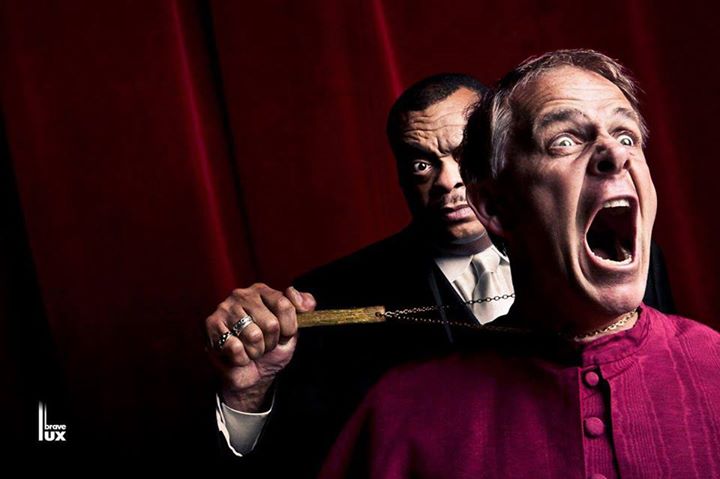 Like “The Misanthrope,” this “Tartuffe” is being performed by a mostly black cast, and Charles Newell, the company’s artistic director, has chosen again to use Richard Wilbur’s supremely elegant verse translation of Molière’s ever-relevant tale of a monstrously hypocritical preacher (Philip Earl Johnson) who cozens his way into the family circle of Orgon (A.C. Smith), a gullible gent whose wife and fortune he covets with like intensity. As always, Mr. Wilbur favors dry wit over knock-down comedy, but his version of “Tartuffe” is more than funny enough to lend itself to the raucous touches of physical comedy with which Mr. Newell has salted his staging.
Like “The Misanthrope,” this “Tartuffe” is being performed by a mostly black cast, and Charles Newell, the company’s artistic director, has chosen again to use Richard Wilbur’s supremely elegant verse translation of Molière’s ever-relevant tale of a monstrously hypocritical preacher (Philip Earl Johnson) who cozens his way into the family circle of Orgon (A.C. Smith), a gullible gent whose wife and fortune he covets with like intensity. As always, Mr. Wilbur favors dry wit over knock-down comedy, but his version of “Tartuffe” is more than funny enough to lend itself to the raucous touches of physical comedy with which Mr. Newell has salted his staging.
Yes, there’s a racial angle–Tartuffe is white, Orgon and his family black–but Mr. Newell doesn’t stress it. The focus is on class, not race, and though you’re free to interpret Tartuffe’s motives as you please, this production is not political in any crudely obvious way….
* * *
Read the whole thing here.
A trailer for The Liar:
Archives for July 2013
TT: Picture this
Childe Hassam’s “Allied Flags, Union League Club,” painted in 1917:
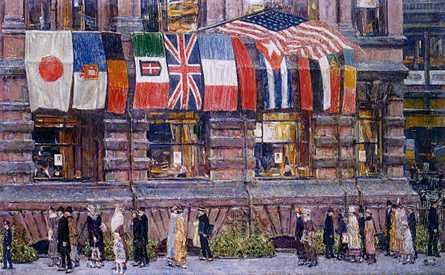
TT: So you want to see a show?
Here’s my list of recommended Broadway, off-Broadway, and out-of-town shows, updated weekly. In all cases, I gave these shows favorable reviews (if sometimes qualifiedly so) in The Wall Street Journal when they opened. For more information, click on the title.
BROADWAY:
• Annie (musical, G, nearly all performances sold out last week, reviewed here)
• Matilda (musical, G, all performances sold out last week, reviewed here)
• The Nance (play with music, PG-13, closes Aug. 11, reviewed here)
• Once (musical, G/PG-13, nearly all performances sold out last week, reviewed here)
• The Trip to Bountiful (drama, G, closes Sept. 1, reviewed here)
• Vanya and Sonia and Masha and Spike (comedy, PG-13, remounting of off-Broadway production, closes Aug. 25, nearly all performances sold out last week, original production reviewed here)
OFF BROADWAY:
• Avenue Q (musical, R, adult subject matter and one show-stopping scene of puppet-on-puppet sex, reviewed here)
• The Fantasticks (musical, G, suitable for children capable of enjoying a love story, reviewed here)
• A Picture of Autumn (drama, G, too serious for children, closes July 27, reviewed here)
• The Weir (drama, PG-13, closes Aug. 4, reviewed here)
CLOSING NEXT WEEK IN PITTSFIELD, MASS.:
• On the Town (musical, G/PG-13, closes July 13, reviewed here)
CLOSING SUNDAY IN WASHINGTON, D.C:
• The Real Thing (drama, PG-13, adult subject matter, closes July 7, reviewed here)
CLOSING SUNDAY OFF BROADWAY:
• Far From Heaven (musical, PG-13, adult subject matter, reviewed here)
TT: Almanac
“If you want to discover just what there is in a man–give him power.”
Francis Trevelyan Miller, Portrait Life of Lincoln
TT: Snapshot
Giovanni Bisaccia plays Louis Moreau Gottschalk’s “The Union: Concert Paraphrase on National Airs”:
(This is the latest in a series of arts-related videos that appear in this space each Monday and Wednesday.)
TT: Almanac
“Where love rules, there is no will to power; and where power predominates, there love is lacking. The one is the shadow of the other.”
Carl Jung, The Psychology of the Unconscious
TT: I’ve got a little list (I)
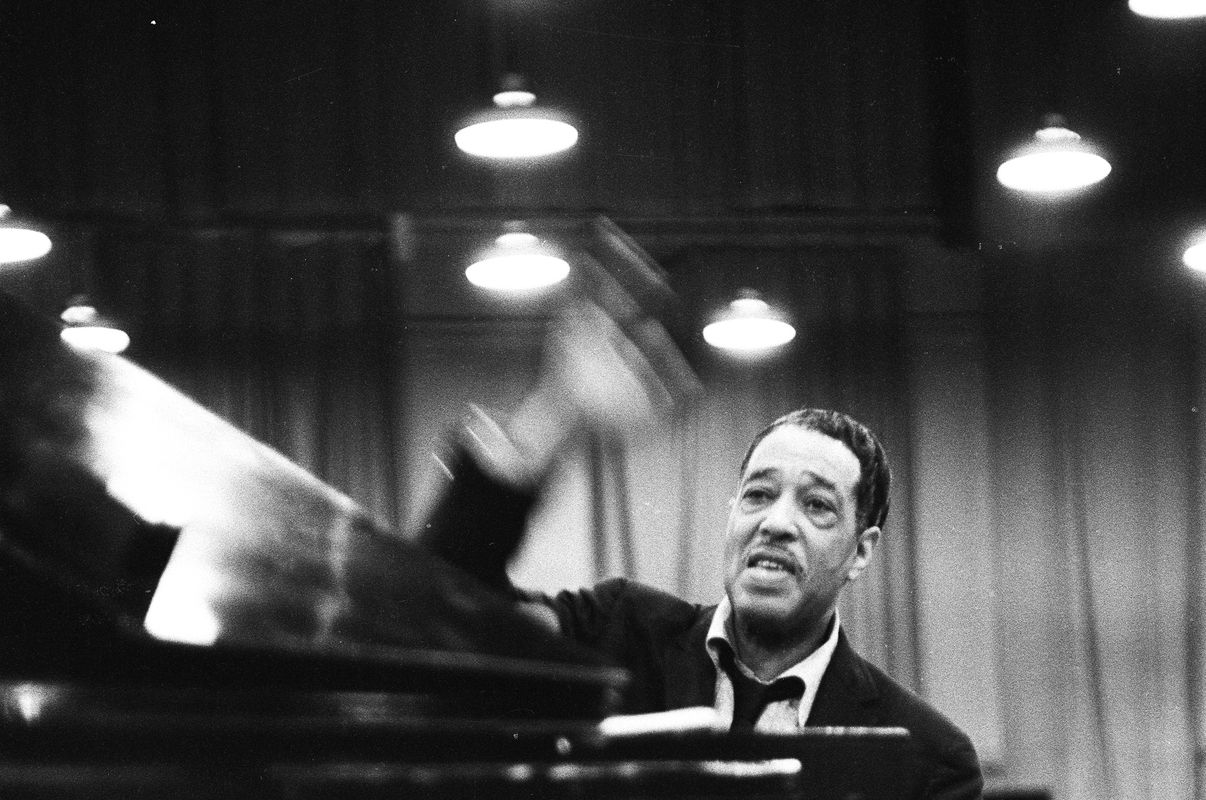 Gotham Books recently asked me to draw up two playlists for Duke: A Life of Duke Ellington, which will be published on October 17. They’re intended to be used for publicity purposes, but I thought it might interest you to see them.
Gotham Books recently asked me to draw up two playlists for Duke: A Life of Duke Ellington, which will be published on October 17. They’re intended to be used for publicity purposes, but I thought it might interest you to see them.
Here’s the first one, a list of ten tracks called, a bit presumptuously, “The Best of Duke Ellington.” Yes, it was an improvisation, but all of these recordings surely belong among Ellington’s best.
If you’re curious, the links will allow you to download the tracks in question.
* * *
Ten essential tracks by the unchallenged master of big-band jazz:
• East St. Louis Toodle-O (1926, composed with Bubber Miley). Duke Ellington’s original theme song, the first great recording by the legendary ensemble that he led for more than half a century
• The Mooche (1928, composed with Bubber Miley). A study in urban debauchery (Ellington called it a “sex dance”) inspired by the scantily dressed dancers of the Cotton Club chorus line
• Mood Indigo (1930, composed with Barney Bigard). This haunting three-in-the-morning nocturne, Ellington’s first popular hit, remains indelible and immortal
• Sophisticated Lady (1933, composed with Lawrence Brown and Otto Hardwick). Duke Ellington didn’t write the tune to his best-loved ballad–he bought it from Lawrence Brown and Otto Hardwick, two of his sidemen, paying them $15 apiece for the rights–but it was his harmonies and orchestration that turned a catchy melodic fragment into an unforgettable standard
• Ko-Ko (1940). Ellington’s masterpiece, a relentless three-minute exercise in minor-key mayhem that contains not a wasted musical gesture. Every bar surges inexorably toward the final catastrophe
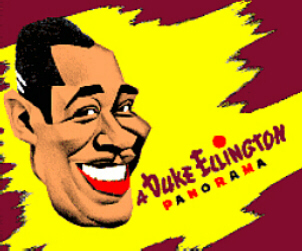 • Things Ain’t What They Used to Be (1941, credited to Mercer Ellington). A no-nonsense down-home small-group blues featuring Johnny Hodges, Ellington’s peerless alto-saxophone soloist
• Things Ain’t What They Used to Be (1941, credited to Mercer Ellington). A no-nonsense down-home small-group blues featuring Johnny Hodges, Ellington’s peerless alto-saxophone soloist
• Do Nothin’ Till You Hear from Me (1947, vocal by Al Hibbler). The popular Ellington, suavely and seductively danceable. A jukebox hit, raised to the level of high art
• A Tone Parallel to Harlem (1951). A swinging musical portrait of Ellington’s New York neighborhood. One of his most successful essays in large-scale composition, it was inspired by George Gershwin’s An American in Paris
• Diminuendo and Crescendo in Blue (live, 1956). Recorded live at the Newport Jazz Festival, this incendiary performance features a twenty-seven-chorus tenor-sax solo by Paul Gonsalves that helped to put Ellington back in the spotlight after a long stretch of near-obscurity
• Blood Count (1967, composed by Billy Strayhorn). This harrowing feature for Johnny Hodges, the musical equivalent of a howl of pain, was the last musical composition by Ellington’s longtime musical partner and collaborator, who was dying of cancer when he wrote it
TT: Lookback
From 2004:
No one who hasn’t written a book can know what it feels like to see it set up in type for the first time. Your own manuscript, however neatly printed it may be, simply isn’t the real thing. It’s homemade, and looks that way. You can edit it as painstakingly as you like, but you still don’t know what your words will sound like in your inner ear until you see the thing itself. It’s unnerving, half scary and half thrilling, to pull the proofs out of their package and start riffling through them, pretending to look for typos (and sometimes finding them) but mostly just gazing raptly at each page, feeling your half-forgotten sentences and paragraphs quiver to life….
Read the whole thing here.
